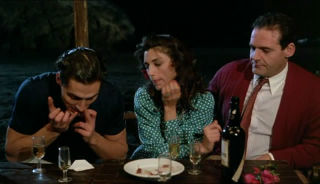
One of the initial ideas came from
Luis Sanz. Half way through the job, I realized the plot was based
on the life of popular folk singer Miguel de Molina [...] We
highlighted Molina's homosexuality and the beatings he received
that ultimately compelled him to leave Spain, although many other
facts and events about his real life weren't touched upon. The
final result has therefore little to do with Miguel de Molina.
There are some elements inspired on his biography in this musical,
but without drawing directly from his life [...]
The film's structure is typical of
this folkloric genre, [...] a pure musical: a girl or boy who
starts at the bottom and works his/her way up to reach success.
Since "La calle 42" (42 Street) this structure has been repeatedly
used in the history of this genre. The only novelty here was that,
with the same story as a starting point, the musical narrates what
was really going on around including the situation of the country
at the time [...]
In a modern musical, and more so in
Spain, the actors can't just start singing in any situation, unlike
the American actors; it had to be a typical Spanish theater musical
in line with long-standing custom and established patterns in
Spain. That is, a musical in which the female sings, not because
she is in her house and the music of the popular piece (originally
a tango though later played by Sara Montiel) "Fumando espero"
begins to play, but because she is an artist. I kept insisting that
the songs should not slow down the pace of the action, but rather
should be related to the narration.
JAIME CHÁVARRI